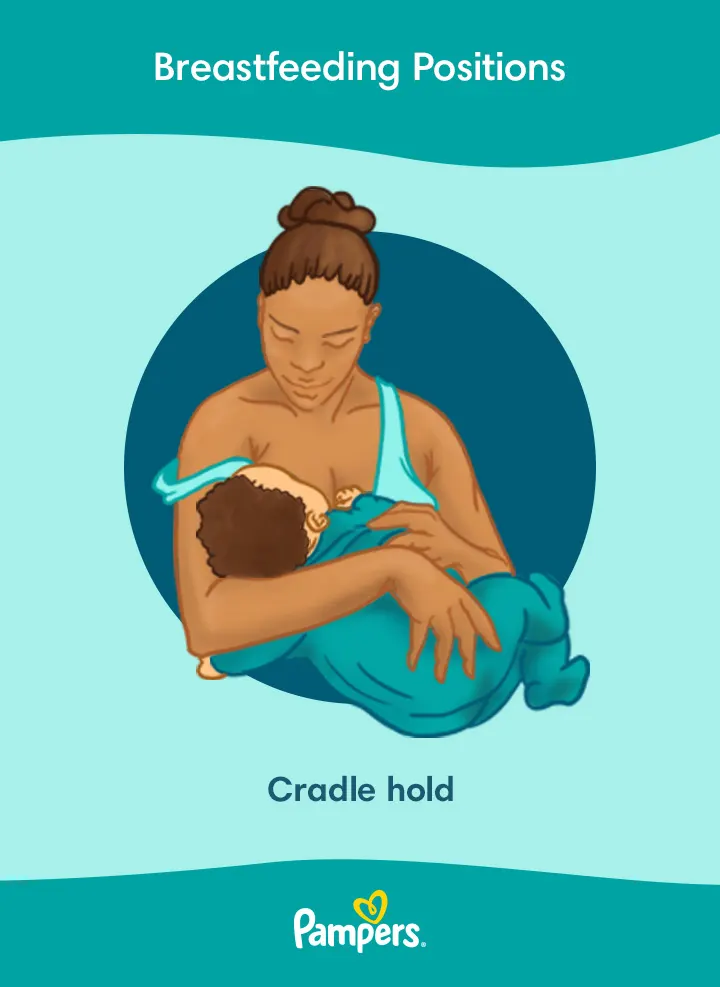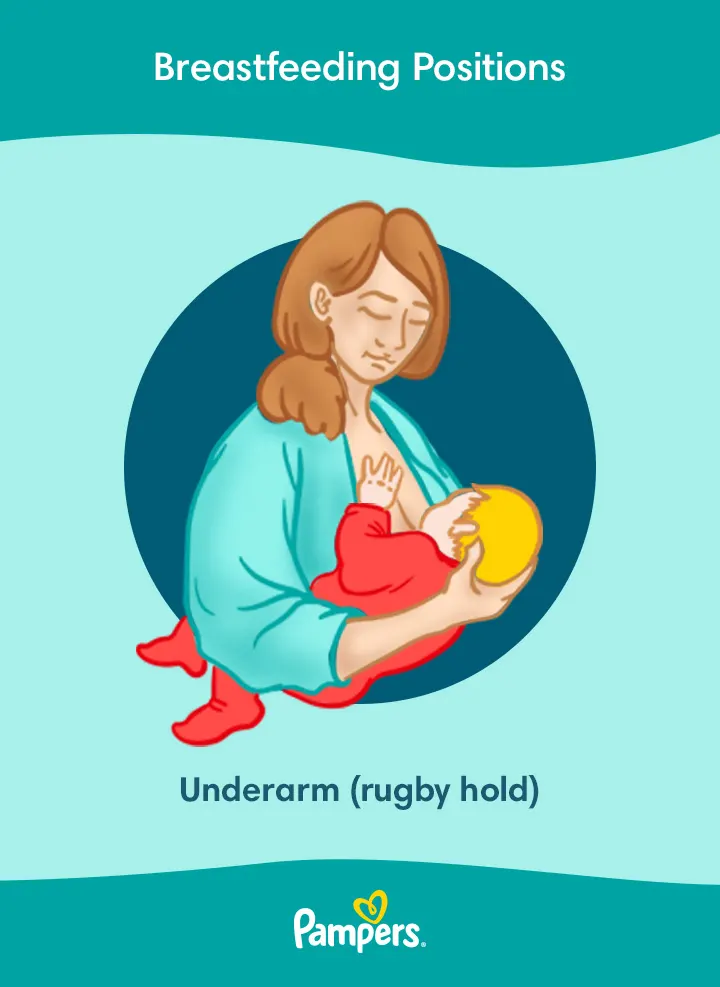5 Different Breastfeeding Positions
You and your baby each have unique needs, which is why one nursing style may not fit all mums and babies. There are many different breastfeeding positions, from the cross-cradle hold to the rugby ball hold. Read more about the different positions, and discover some helpful breastfeeding tips.
One: The Cross-Cradle Hold
This is one of the best positions for your first time breastfeeding. Find a comfortable chair with arm rests, and sit up straight. Bring your baby across the front of your body, with her tummy touching yours. Hold her body in the crook of your arm, opposite the breast you're going to feed from. Use the right arm for the left breast and left arm for the right breast. Support her head with your open hand, and with the other, support your breast from the underside in a u-shaped hold. Gently guide your baby's mouth to your breast without bending over or leaning forward. You'll want to cradle her close to your breast. This is a good position if your baby is having some difficulty latching on, because it makes it easier for you to guide her head into a better position by supporting the back of her neck between your fingers and thumb.
Two: The Cradle Hold
This is similar to the cross-cradle hold, but instead, you support your baby with the arm that's on the same side as the nursing breast. You should sit up straight in a comfy chair with armrests, and cradle your baby in your arm with his head comfortably resting in the crook of your elbow as he faces your breast. Make sure your baby's head is aligned with the rest of his body, and not turned to the side. You can make things comfortable with a little extra support from a pillow laid across your lap.
Three: The Rugby Ball Hold
If you're recovering from a c-section or if you have large breasts, the rugby or underarm hold for breastfeeding may be a comfortable position for you. It can be an easier position to maintain because it keeps your baby's weight off your abdomen. With your elbow bent, hold your baby beside you, level with your waist. Support your baby's head with an open hand, and face her toward your breast. Her back will rest on your forearm, just like you're holding a clutch bag or a rugby ball. Support your breast with your other hand in a c-shape. This is also a good position for premature babies.
Four: Breastfeeding Lying Down
If you're feeling tired after childbirth, or if you're just generally sleepy, you can lie down to feed, but do be sure to stay awake. Nursing while lying on your side, instead of sitting, is a good option if you've had a c-section. You'll want to lie on your side, and face your baby toward your breast, making sure he's supported with one hand. Use the other hand to take your breast and touch the nipple to your baby's lips. Once he latches on, you can then use one arm to support yourself and the other to hold your baby close.
Five: Feeding Twins
If you have twins, you might want to feed them separately, but it's perfectly possible to breastfeed twins at once. This is usually referred to as tandem feeding. Try a few of the above breastfeeding positions to find the one that suits you the best, maybe even ask for advice at your hospital when you begin nursing.
Breastfeeding Positions to Avoid
Take care to avoid certain positions that can be bad for you or your baby, including:
Hunching over your baby
Having your baby's body and head facing different directions – he should not have to turn his head to feed
Holding your baby's body far away from the breast.
Tips for Every Breastfeeding Position
No matter the position, you'll want to do everything you can to make yourself and your baby comfortable. Try the following:
Support your body. Pick a chair with armrests, and use plenty of pillows to support your back and arms. The average couch won't give you enough support. Consider using a footrest, or improvise with a coffee table to prop you up.
Support your breasts. Your breasts are probably feeling heavier as they fill up with milk. Use your hands to support them while feeding. Keep your fingers away from the nipple and areola, so your baby doesn't accidentally suck on them instead. If you have large breasts, you can even place a rolled up towel or blanket beneath your breast to keep the nipple at a straight-on angle with your baby's mouth.
Support your baby. Make sure your baby is comfortable and secure, so she'll nurse happily. Use your arm or hand to hold her in place, or place a blanket or pillow under her head and back for extra support, so your baby's head is level with your breast. You can also place a pillow on your lap, with your baby on top, so you both feel more comfortable – this is especially recommended if you've had a c-section.
Alternate between breasts.When your baby drains one breast, offer the other. Next time, start with the full breast first. This will help boost milk production and help prevent mastitis.
Relax. Make sure you're relaxed before and during breastfeeding, as this will make the experience better for both you and your baby. Breastfeeding is a wonderful opportunity to bond with your baby, and once she's latched on, it can be an enjoyable experience for you, too.
If you have any questions about how to breastfeed or if you want to know more about breastfeeding in general, have a look at our breastfeeding FAQ.
The breastfeeding experience is different for every woman, and it's OK to have a slow start. The more you feed, the easier it will get. Turn to a midwife, health visitor, or GP if you're worried or have questions.
Read more about Newborn Baby
Join Pampers Club and get:








